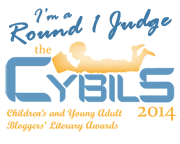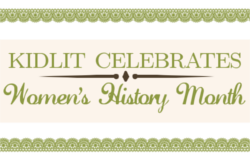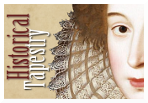Monday, January 19, 2015
Book Review: A Cottage in the Woods, by Katherine Coville (Alfred A. Knopf, 2015)
Release date: February 10, 2015
Recommended for ages 10 and up.
Jane Eyre meets Goldilocks and the Three Bears in this enchanting tale of Ursula, an impoverished yet well-brought-up young governess hired to take care of adorable young Theodore Vaughn in a creepy, huge manor house in which portraits follow you with their eyes, strange unseen footsteps follow you down the hall, and objects disappear from rooms without a trace. There's mystery, adventure, small town politics, and even romance. Sound familiar? But in this book our main characters are all....well, bears. Filled with tropes from gothic novels, this book draws you into its enchanted world and is hard to put down. It is sure to please tweens and even teens who enjoy fairy-tale mashups, whether TV series such as Once Upon a Time and Grimm or books by Shannon Hale, Adam Gidwitz, Michael Buckley, and others.
Our story is set in the Enchanted Forest, populated not only by characters from the Goldilocks tale but also characters from other beloved stories and nursery rhymes such as The Three Pigs, the Old Woman Who Lived in the Shoe, and the Bremen Street Musicians. These talking animals live in peace with their human counterparts. But when a mute, filthy, starving little girl with golden hair is taken in by the kindly bear family, prejudice against the talking animals from the human community comes to the forefront. Will Goldilocks, who becomes a beloved foster child, be able to stay with her new bear family? And what will happen to the kindly governess, Ursula, who has fallen in love with Mr. Bentley, another member of the Vaughn family's staff? The novel is full of bears who know Latin, awkward but well meaning ministers, seemingly menacing nurses; Coville does a marvelous job capturing the formal vocabulary and images of the 19th century period in which the story seems to be set, a time in which even young proper bears must wear corsets and not spend time alone in the company of a young male bear. If you've read Jane Austen and other 19th century novelists these touches are especially endearing.
Note: Review copy received through Amazon Vine.
Friday, January 16, 2015
Book Review, Giveaway, and Blog Tour: When Otis Courted Mama, by Kathi Appelt, illustrated by Jill McElmurry (Houghton Mifflin Harcourt, 2015)
Recommended for ages 4-8.
Award-winning author Kathi Appelt tackles the tricky subject of stepfamilies in her newest picture book, When Otis Courted Mama. Less than half of US families live in traditional households (i.e. two heterosexual parents in their first marriage), according to a 2014 Pew Research study. Yet most of our picture books still seem to reflect an "ideal family" that's just not the reality for most kids. Books such as When Otis Courted Mama fill a gap for many children who need books that address their own family situations.
Appelt creates an appealing protagonist in the coyote pup Cardell. He has a "most wonderful life" for a young coyote; he lives with his "perfectly good" daddy and his step-mother and step-brother part of the time, and with his "perfectly good mama" the rest of the time at the opposite end of the desert (who knew coyote families were so complicated?) In general, Cardell has his mama all to himself, and he likes it that way. He feels loved "through and through" by both his parents, and that's the way it should be.
Complications to young Cardell's life ensue when Mama's neighbor Otis comes courting, carrying ocotillo flowers in one paw and a bag of cactus candies in the other. It's clear that Mama's been dating for a while, and some of her prior suitors are comically described in the text and illustrations, but none of them was any real threat to Cardell's close ties with Mama. Otis is the first coyote caller that Mama doesn't send packing. Cardell isn't too happy about this, but his growling at Otis doesn't seem to do any good. In the end, Otis wins Cardell over and the new coyote family lives happily ever after, sticker burs and sand fleas aside.
This book deals sensitively with the many complicated feelings of jealousy that ensue for a child when a parent begins a new relationship. Cardell learns that although Otis isn't good at the same things as his own daddy, he has other qualities to offer, and in the end he still has a "perfectly good daddy and a perfectly good mama...but now Cardell also had someone else: Otis!" The casting of coyotes instead of humans in this picture book gives what could be a serious subject a playful tone. The coyotes are more human than animal, however, as they walk on two legs, and engage in decidedly human activities such as making flapjacks, playing instruments, reading books, dancing, and even painting pictures (Cardell's Mama is an accomplished artist). Yet they also engage in coyote behavior such as howling at the moon, and in addition to flapjacks, Cardell's diet includes more typical coyote-like fare such as rats and chuckwallas. Illustrator Jill McElmurry creates very large-eyed coyotes that look more cute than predator-like, and the coyotes are depicted wearing natty accessories like hats, scarves, and flowers in their fur. There's lots of local Southwest color in the story, both in the text and in Jill McElmurry's whimsical images, which make use of a traditional Southwestern palette, and the Southwestern landscape of mesas and cactus reinforces the setting for young readers.
To download a free, CCSS-aligned curriculum guide, visit http://www.scribd.com/doc/251856381/When-Otis-Courted-Mama-Curriculum-Guide#scribd or Kathi’s website at kathiappelt.com. You can check out the book trailer at
https://www.youtube.com/watch?v=bCcoiOVgxiY&feature=youtu.be and also find a full-color door hanger and other fun downloadables at http://www.scribd.com/doc/251856096/When-Otis-Courted-Mama-Activity-Pages#scribd.
For more on Cardell, Otis, Mama, and Kathi Appelt, check out the other blog tour stops:
date
|
blog
|
blog URL
|
Mon, Jan 5
|
5 Minutes for Books
| |
Tues, Jan 6
|
Cracking the Cover
| |
Wed, Jan 7
|
Sharpread
| |
Thurs, Jan 8
|
Unleashing Readers
| |
Fri, Jan 9
|
Once Upon a Story
| |
Sat, Jan 10
|
Booking Mama
| |
Mon, Jan 12
|
Geo Librarian
| |
Tues, Jan 13
|
The Late Bloomer's Book Blog AND NC Teacher Stuff
| |
Wed, Jan 14
|
Teach Mentor Texts
| |
Thurs, Jan 15
|
Kid Lit Frenzy
| |
Fri, Jan 16
|
The Fourth Musketeer
|
Giveaway!
One lucky winner will receive a copy of WHEN OTIS COURTED MAMA by Kathi Appelt, illustrated by Jill McElmurry (U.S. addresses only)
Friday, January 2, 2015
Cybils Finalists announced on January 1, 2015!
Over the last month or so, I have not had much time for my blog since I have been very busy reading over 100 titles as a first-stage judge in the Nonfiction for Early and Middle Grades category of the Cybils awards. Growing up in the 1960's and 1970's, when there was a lack of attractive nonfiction books for kids, I found a special delight in reading so many fabulous nonfiction books for kids on every conceivable topic, from history, biography, astronomy, animals, archaeology, and much much more. There is a book out there for every young reader, and for many it might be one of these excellent nonfiction titles. A list of the seven titles picked as finalists follows, along with blurbs by the committee members:
by Russell Freedman
Clarion Books
Nominated by: Jenna G
While Ellis Island is frequently written about in literature for young people, few Americans are familiar with its West Coast equivalent, Angel Island, off the California coast, which processed about one million immigrants from Japan, China, and Korea at the beginning of the 20th century. Using original source documents, including memoirs, diaries, letters, and “wall poems” written directly on the walls of the facility, master nonfiction writer Russell Freedman brings the moving story of this little-known facility to life. The book is abundantly illustrated with archival photographs and includes extensive back matter.
Margo Tanenbaum, The Fourth Musketeer
by Sy Montgomery
Houghton Mifflin Harcourt
Nominated by: Christopher Leach
This book chronicles the efforts of Laurie Marker and the Cheetah Conservation Fund to save the endangered cheetahs of Namibia through unique collaborations with the local farmers. Like most Scientists in the Field titles, it includes the story of the main scientist’s life, involvement and viewpoints of locals, and stunning photographs. This is a perfect blend of inspiration and science, encouraging kids to dig deeper and think about a popular topic. A great book for strong middle-grade readers to enjoy on their own or to read together as a family or class.
Jennifer Wharton, Jean Little Library
by Melissa Stewart
Charlesbridge
Nominated by: laurapurdiesalas
This unique look at a bird’s most obvious characteristic, its feathers, compares the many different uses of feathers to familiar items like a blanket and an umbrella. The text is layered with simple, declarative sentences and more complex factual captions and statements. Stunning artwork creates a scrapbook effect out of illustrations, with a skillful use of shadows to create a three-dimensional effect. This lovely and useful book will catch the interest of preschool through early elementary students who will pore over the art, be drawn into the text, and possibly inspired to start their own nature notebooks.
Jennifer Wharton, Jean Little Library
by Loree Griffin Burns
Millbrook Press
Nominated by: Beth Mitcham
The Very Hungry Caterpillar gets a literary partner for older children in Handle With Care, which takes readers on a visual tour of a butterfly farm in Costa Rica to further explore the miracle of metamorphosis. Accurate but restrained text complements the crisp photos popping with color. Sometimes the photos are a single, detail-revealing close-up, while others use fascinating multiples & patterns: caterpillars in a bucket, pupae sorted into piles for shipping or lined up in neat rows. Generous use of white space keeps the focus trained on the miracle – the life cycle of butterflies. More than a simple documentary of the process, Handle With Care sets the understanding of metamorphosis in the larger context of our living, global ecosystem. It introduces the more challenging concept of the values and beliefs that drive the acquisition and application of scientific knowledge. Useful across several age levels, opportunities abound to enrich school curriculum in science as well as social studies. The title skillfully spotlights the larger message that, when handled with care, the earth and its inhabitants can flourish together.
Carrie Waterson, The Indianapolis Public Library Kids’ Blog
by Duncan Tonatiuh
Harry N Abrams
Nominated by: Tasha
Most school-aged children can tell you about Ruby Bridges. Far fewer, however, maybe almost none, know about Sylvia Mendez, and yet it was Mendez and her family who actually paved the way for desegregation in California in 1947, seven years before Brown vs. the Board of Education and over a decade before Ruby Bridges attended school in New Orleans. Duncan Tontiuh’s picture book, Separate is Never Equal, chronicles the story of Mendez vs. Westminster in a way that is understandable to very young children, and yet appealing to young adults. Tontiuh was born in Mexico City, and his desire “to create images that honor the past, but that address contemporary issues that affect people of Mexican origin on both sides of the border, ” is clearly reflected in his style, which draws heavily on the ancient Mixtec Indian tribe. End matter includes a note from the author, photographs of Sylvia, her parents, and the schools she attended, a glossary, a bibliography, and an index. A book that should be read in every classroom!
Carol Wilcox, Carol’s Corner
by Sandra Markle
Millbrook Press
Publisher/ Author Submission
Bats might seem a bit frightening, but they actually do all of us a huge favor. They eat about half their bodyweight in insects – roughly the equivalent of a thousand mosquitoes – each night! This means they help limit the spread of disease and protect crops. Little brown bats were once one of the most common bat species in North America, but a few years ago scientists noticed that the bats were behaving oddly and dying out in huge numbers each winter, struck down by a mystery killer.
Markle walks us carefully though the mystery, first by explaining the lifestyle of little brown bats and the important role they play in the ecosystem. Next she introduces us to a variety of scientists from different disciplines, all of whom are working together to solve the mystery and save the bats. With attractive layouts and amazing photographs, The Case of the Vanishing Little Brown Bats neatly lays out the steps that scientists take to solve the problem – developing a set of hypotheses to investigate, collecting data in order to test each one, zeroing in on the culprit and finally proposing a range of possible solutions. This book is a wonderful introduction to problem solving for middle grade students, animal lovers, and budding scientists.
Elisa Bergslien, Leopards and Dragons
by Rebecca L. Johnson
Millbrook Press
Publisher/ Author Submission
If a good defense is the best offense, then When Lunch Fights Back: Wickedly Clever Animal Defenses by Rebecca L. Johnson shows just how offensively awesome some animals and plants can be when it comes to protecting themselves from predators. The photography, which utilizes a combination of well-timed traditional and underwater photography, x-ray technology, and visuals captured with a scanning electron microscope, amplifies the reader’s understanding of how each animal employs its unique defenses. When Lunch Fights Back is an incredible highlights reel of gross facts about the techniques animals use to survive to fight another day. Johnson has created a compilation that will be stalked by kid-predators looking to devour the facts inside and fortunately, this book will not fight back. When Lunch Fights Back is well documented with source notes, photo acknowledgements, a selected bibliography, and a number of sources to continue to explore the topic further.
Ellen Zschunke, On The Shelf 4 Kids
Subscribe to:
Posts (Atom)












